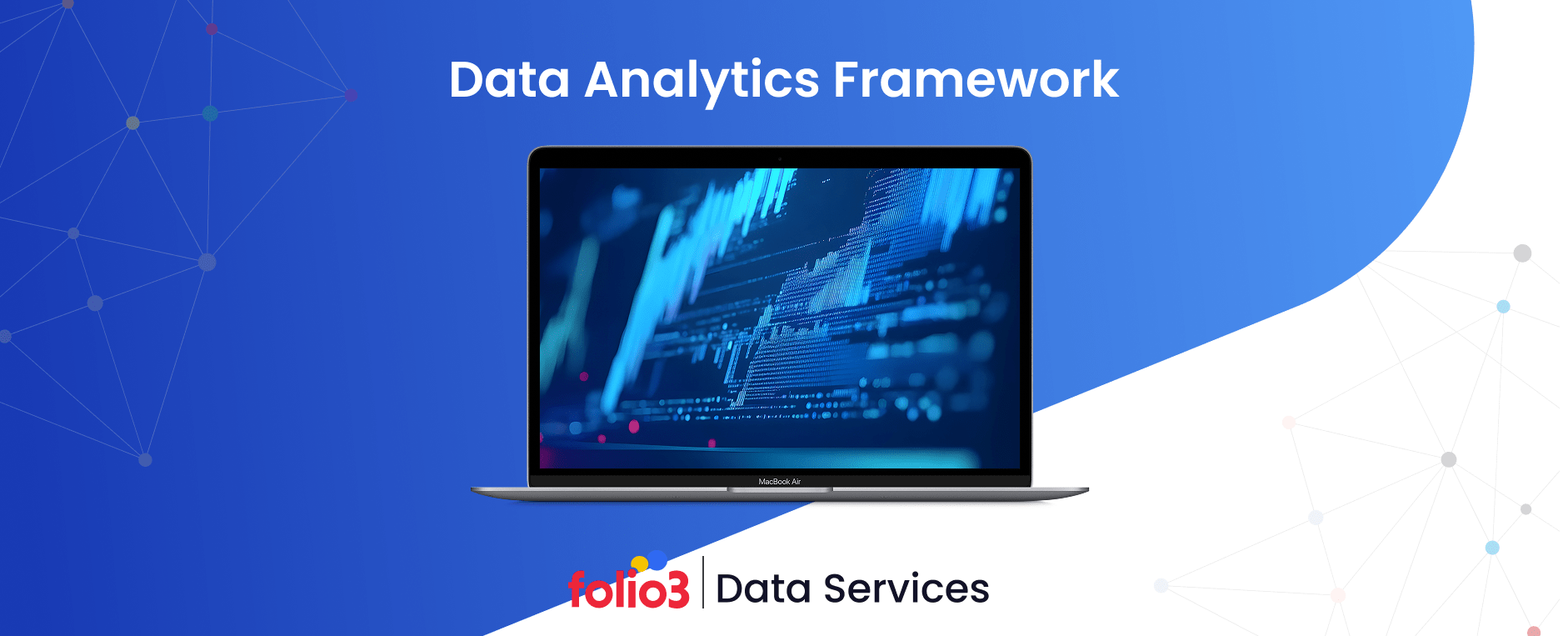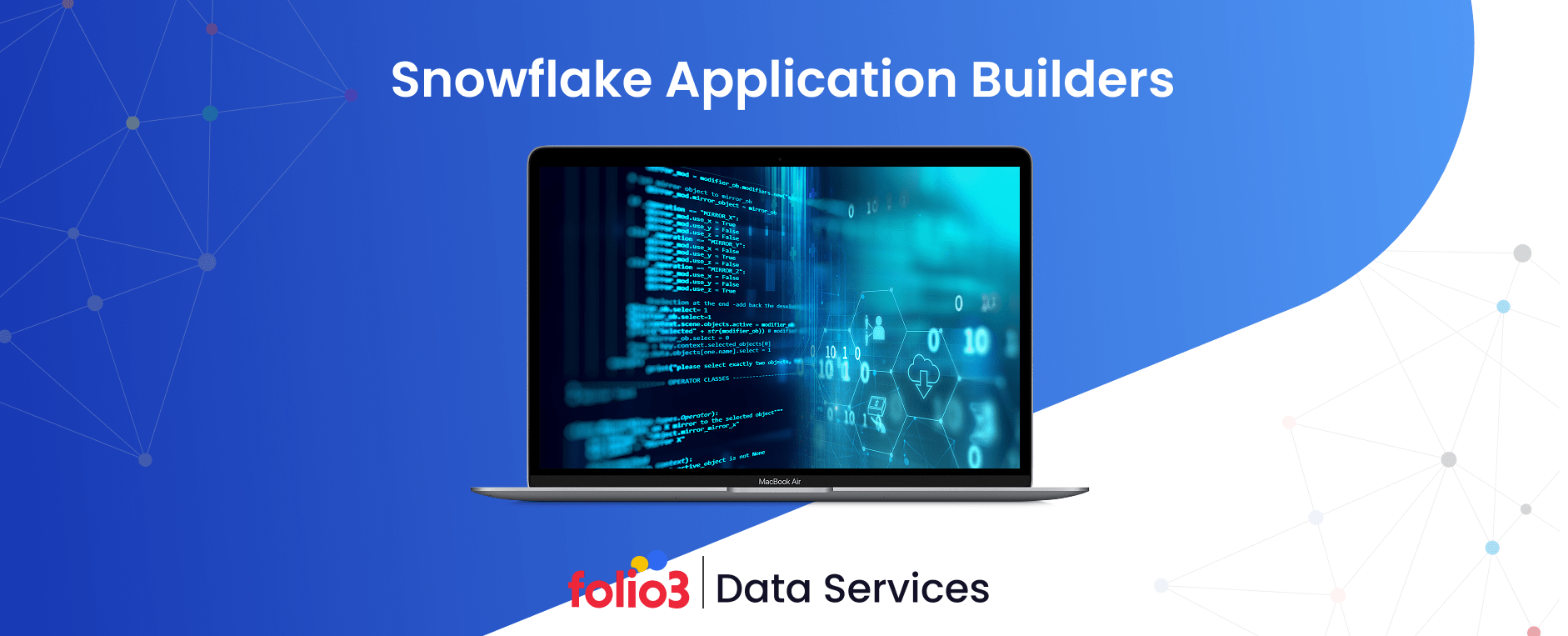Data is the lifeblood of modern decision-making, a resource driving innovation across every industry. But raw data, in its unrefined state, is like a treasure chest locked with a complex combination.
This is where data engineering steps in. Data engineering is the practice that unlocks data’s potential, transforming it from a disorganized mess into a goldmine of insights.
So, whether you’re a business leader seeking to leverage the power of data or an aspiring tech professional curious about this burgeoning field, this guide is your roadmap to understanding the magic behind what is data engineering. So, let’s get started!
What Is Data Engineering?
In the age of information overload, if you are unfamiliar with what is data engineering, you should know that it is the king. But raw, unprocessed data is like vast, uncharted territory, an entire of potential riches but nearly impossible to navigate.
This is where data engineering enters the scene, acting as the cartographer, architect, and engineer that transforms this untamed landscape into usable, navigable terrain for businesses to explore and exploit.
Data engineering is the backbone of the data-driven world. The intricate discipline encompasses the entire data lifecycle, from its humble beginnings as raw streams to its final transformation into actionable insights.
Let’s delve deeper into this multifaceted process of what is data engineering:
1. Data Acquisition
The journey starts with identifying and collecting data from various sources. This can involve scraping data from websites, extracting information from databases, or ingesting sensor data from IoT devices. Data engineers design and implement robust systems to gather this data efficiently and reliably.
2. Data Storage
Once acquired, this data needs a secure and scalable home. Data engineers design and manage data storage solutions, considering factors like cost, performance, and regulatory compliance. Many organizations rely on data engineering services to implement robust architectures—whether using traditional relational databases, analytics-optimized data warehouses, or distributed file systems for massive datasets.
3. Data Transformation
Raw data is rarely usable in its original form. Data engineers employ various techniques to clean, transform, and prepare the data for analysis. This might involve removing duplicates, correcting inconsistencies, and converting data formats to ensure consistency and accuracy.
4. Data Pipeline Development
Imagine a factory assembly line but for data! Data engineers design and build data pipelines – automated workflows that move data seamlessly through the various processing stages. These pipelines ensure a continuous data flow ready for analysis at any given time.
5. Data Quality Management
Data is only valuable if it’s trustworthy and data engineers implement processes and tools to ensure data quality throughout its lifecycle. This involves monitoring data for errors, identifying and correcting inconsistencies, and defining data governance policies to maintain data integrity.
Key Elements of Data Engineering
The data engineering process is comprehensive and tames the wild beast of raw data. However, this multifaceted discipline relies on several key elements to transform data into a usable asset. Let’s delve deeper into each of these crucial fundamentals of data engineering:
1. Data Extraction/Collection
This is the starting point, where data engineers act as data scouts, venturing to identify and gather valuable information from diverse sources. This might involve:
- Structured Data: Extracting data from relational databases, like customer information or sales figures.
- Semi-structured Data: Scraping data from websites or social media platforms may require parsing and reformatting.
- Unstructured Data: Ingesting sensor data from IoT devices, log files, or even video and audio recordings, often requiring specialized tools and techniques.
2. Data Ingestion
Once the data is located, it needs to be securely brought into the data ecosystem. Data engineers design and implement data ingestion pipelines that seamlessly transfer data from its source to a designated storage location, ensuring a smooth and reliable flow of information.
3. Data Transformation
Raw data is rarely ready for analysis “as is.” Data engineers act as data wranglers, employing various techniques to clean and transform the data into a usable format. Here’s what this might entail:
- Data Cleaning: Removing duplicates, correcting inconsistencies, and handling missing values to ensure data integrity.
- Data Transformation: Converting data formats (e.g., from CSV to JSON) and applying transformations like normalization to ensure consistency across different datasets.
- Data Enrichment: Integrating data from multiple sources to create a more comprehensive view of the information.
4. Data Modeling, Scaling, and Performance
Data engineers are the architects of the data storage infrastructure. They design data models – blueprints that define how data is organized and structured within the storage system. This ensures efficient data retrieval and analysis.
However, data volume can be a challenge. Data engineers also consider scalability – designing systems that can accommodate growing data volumes without compromising performance. This might involve leveraging distributed storage solutions or optimizing data pipelines for efficient processing.
5. Data Quality and Governance
“Garbage in, garbage out” applies heavily to data engineering. Data engineers implement quality checks and processes to ensure data accuracy, completeness, and consistency throughout its lifecycle. This might involve:
- Data Validation: Defining rules to identify and address errors or inconsistencies in the data.
- Data Profiling: Analyzing data to understand its characteristics and identify potential issues.
- Data Governance: Establishing policies and procedures to maintain data integrity and ensure responsible data usage within the organization.
6. Security and Compliance
Data security is paramount. Data engineers implement security measures to protect sensitive information from unauthorized access, breaches, or manipulation. This might involve encryption techniques, access controls, and data anonymization where necessary.
Compliance with data privacy regulations like GDPR or CCPA is also crucial. Data engineers ensure data collection, storage, and usage comply with relevant laws to protect user privacy.
Why Is Data Engineering Important?
Now that we understand what is data engineering and the various elements that make it tick, the actual value of this discipline lies in the immense benefits it unlocks for businesses.
Here’s why data engineering is the unsung hero of the data revolution:
1. Data Accessibility and Reliability
Imagine a treasure chest overflowing with gold, but the lock is rusted shut. Raw data is like that locked chest – valuable but inaccessible in its unprocessed state. Data engineers act as the locksmiths, building pipelines and infrastructure that make data readily available for analysis.
This empowers data scientists, analysts, and business users to access the information they need when they need it. Furthermore, data engineers ensure the reliability of this data.
Data quality checks and governance practices guarantee information accuracy, completeness, and consistency, eliminating the risk of basing decisions on faulty or misleading data.
2. Quality and Consistency
Raw data is often messy and inconsistent, a tangled web of formats and structures. Data engineers are detectives who meticulously clean and transform data into a standardized format.
This ensures that data from diverse sources can be easily integrated and analyzed, leading to more comprehensive and reliable insights.
It is like comparing apples to oranges – converting them to a standard unit (e.g., weight) is impossible. Data engineers perform a similar function, ensuring all data speaks the same language for seamless analysis.
3. Scalability
The volume of data generated today is growing exponentially. Businesses are collecting information from an ever-increasing number of sources – customer transactions, social media interactions, sensor data, and more.
Without proper data engineering, this deluge of data would quickly become overwhelming. Data engineers are the architects of scalable data infrastructure. They design systems that can accommodate massive data volumes without compromising performance.
This ensures businesses can continue to leverage their data as it grows, enabling them to make informed decisions even with ever-expanding datasets.
4. Automation and Efficiency
Data processing can be a time-consuming and error-prone manual process. Data engineers come to the rescue by building automated data pipelines. These pipelines streamline data movement through the various processing stages, from extraction to transformation and loading.
This automation frees up valuable human resources for more strategic tasks like data analysis and interpretation. Additionally, it minimizes the risk of human error introduced during manual data handling, leading to a more efficient and reliable data-driven workflow.
Some standard terms in Data Engineering
Data engineering, the backbone of the data-driven world, thrives on a specific vocabulary. This section dives into some of the most frequently encountered terms, equipping you to confidently navigate data engineering discussions.
1. ETL/ELT/Data Pipelines: The Data Transportation Network
Imagine data engineers as logistics experts, meticulously moving data from its origin (source) to its final destination. This transportation happens through data pipelines – automated workflows that orchestrate the data’s journey through various stages.
There are two main approaches to data pipelines:
ETL (Extract, Transform, Load)
This method follows a three-step process:
1. Extract
Data is retrieved from its source (databases, APIs, etc.).
2. Transform
The data is cleaned, standardized, and prepared for analysis. This might involve removing duplicates, correcting inconsistencies, and converting formats.
3. Load
The transformed data is loaded into the target system (data warehouse, data lake).
ELT (Extract, Load, Transform)
Here, the workflow is streamlined:
1. Extract
Data is retrieved from the source.
2. Load
The data is directly loaded into the target system.
3. Transform
The transformation process happens within the target system itself.
While ETL and ELT are the most common, data pipelines can take on other forms. These include event pipelines for real-time data capture, streaming pipelines for continuous data ingestion, and change data capture (CDC) pipelines for tracking modifications in source data.
Critical components of a data pipeline:
- Extract: Connecting to a data source and retrieving the data.
- Transform: Cleaning, standardizing, and preparing the data for analysis.
- Load: Transferring the transformed data to the target system.
2. Data Modeling
Data modeling is the architect’s blueprint for a data warehouse. It defines how data will be structured and organized for efficient storage and retrieval.
Unlike traditional database models designed for fast transactions (OLTP), data models in data engineering prioritize analytical capabilities. Here, denormalization is often used to optimize data for complex queries and aggregations.
Various data model designs exist, with common ones including snowflake schemas (centralized fact tables with surrounding dimension tables), star schemas (similar to snowflakes but more straightforward), and activity schemas (optimized for tracking changes over time).
3. Data Integrity Checks
With vast amounts of data flowing through pipelines, ensuring its accuracy and completeness is crucial. Data integrity checks act as the first line of defense, identifying potential issues like:
- Null Checks: Identifying columns with excessive missing values.
- Anomaly Checks: Detecting drastic changes in data values or row counts (e.g., a sudden surge in sales figures).
- Category Checks: Ensuring data adheres to predefined categories (e.g., valid state codes in an address field).
- Uniqueness Checks: Preventing duplicate rows in the final data set. This is especially important for ensuring accurate analysis.
- Aggregate Checks: Verifying the consistency of aggregate values (e.g., total sales) throughout the data pipeline.
4. Streaming vs. Batch Processing
Data pipelines can be categorized based on how they handle data processing:
- Batch Processing: Batch Processing is the traditional approach, where data is processed at scheduled intervals (e.g., hourly, daily). It is suitable for historical data analysis where real-time isn’t critical.
- Streaming: Here, data is ingested and potentially transformed as soon as it’s generated, enabling real-time data analysis. This is ideal for applications where immediate insights are necessary (e.g., stock market analysis).
The choice between batch and streaming processing depends on factors like the volume of data, latency requirements (real-time vs. delayed analysis), and the nature of the data source.
5. Big Data Processing
“Big data” refers to massive datasets that are difficult to manage using traditional methods. To handle this complexity, data engineers leverage various big data processing techniques:
- Massively Parallel Processing (MPP): This distributes tasks across multiple nodes (computers) for faster processing. Imagine dividing a giant puzzle into sections and having multiple people work on it simultaneously.
- MapReduce: Another parallel processing paradigm that breaks down enormous datasets into smaller chunks for distributed processing on multiple nodes. Consider dividing a large document into pages and having numerous people analyze each page concurrently.
6. Data Warehouses
These are centralized repositories designed for storing historical data from various sources. Data warehouses are specifically optimized for analysis. They typically follow a structured schema, making data retrieval efficient for complex queries and reports.
7. Data Lakes
These are a more flexible storage solution for housing raw, unstructured data in its native format. Data lakes offer greater scalability and potentially lower storage costs than data warehouses.
They’re ideal for storing a wide variety of data types, including sensor data, social media feeds, and log files, that may not initially have a predefined structure.
8. Data Lakehouses
Data lakehouses are a recent innovation that combines the benefits of data warehouses and data lakes. This approach seeks to provide the flexibility and scalability of a data lake along with the data governance and ACID (Atomicity, Consistency, Isolation, Durability) guarantees of a data warehouse.
ACID ensures the integrity and reliability of data transactions within a data warehouse. Atomicity ensures that all parts of a transaction happen or that none do.
Consistency ensures data transitions from one valid state to another. Isolation ensures concurrent transactions don’t interfere with each other. Durability ensures data persists even in case of system failures.
Data lakehouses achieve this by implementing a structure layer on top of the data lake. This allows for efficient data retrieval for analysis while maintaining the flexibility to store various data types.
Data Engineering for Data Quality and Integrity
Data engineering goes beyond just moving data around. It plays a critical role in ensuring the quality and integrity of that data, which is the foundation for any data-driven decision. Here’s how data engineering safeguards the well-being of your data:
- Data Governance: Data engineers act as the guardians of data quality, implementing robust data governance practices.
- Scalability Superhero: As data volumes explode, data engineers become the superheroes of scalability. They design and build data architectures that can handle this growth efficiently.
- The Bridge to Advanced Analytics: Data engineering bridges raw data and the world of advanced analytics and AI. Data engineers collaborate with data scientists to structure data in a way conducive to analysis and machine learning algorithms.
By preparing high-quality data, data engineers empower data scientists to extract valuable insights and build powerful AI models. Imagine a self-driving car trained on inaccurate sensor data – the consequences could be dire. Data engineers ensure the data used for AI is reliable and trustworthy.
What is Data Engineering Vs Data Science? – Data Engineering Vs Data Science
While data engineers and scientists deal with data, their organizational roles are distinct. Here’s a breakdown to shed light on these crucial data professions:
Data Engineers
Imagine data as the raw materials for a construction project. Data engineers are the architects and builders who design and maintain the systems that collect, store, and prepare this data for analysis. Their key responsibilities include:
- Data Pipeline Development: They create data pipelines, essentially automated processes that extract data from various sources, transform it into a usable format, and load it into data warehouses or lakes for further analysis.
- Data Quality Assurance: Data engineers ensure data’s accuracy, consistency, and completeness throughout its journey. This involves cleaning and validating data to eliminate errors.
- Scalable Data Infrastructure: They design and build data storage solutions to handle the ever-growing volume of data organizations collect.
Data Scientists
Data scientists are the analysts who leverage the data infrastructure built by engineers to extract meaningful insights. They act like detectives, using statistical and machine-learning techniques to uncover hidden patterns, trends, and relationships within the data. Here’s what they typically do:
- Data Analysis and Visualization: They analyze the prepared data using various statistical methods and tools to identify trends and patterns. They also create visualizations, such as charts and graphs, to communicate these findings effectively.
- Building Predictive Models: Data scientists develop and deploy machine learning models to predict future outcomes or classify data points. This allows organizations to make data-driven decisions.
- Business Problem-Solving: They work with organizational stakeholders to understand their business problems and translate them into actionable data-driven solutions.
Role and Responsibilities
- Data Analyst vs. Data Scientist: Data analysts typically focus on specific datasets and answer well-defined questions, while data scientists have a broader skillset and tackle more complex problems that might require building models.
- Machine Learning Engineer: Machine learning engineers specialize in building and deploying machine learning models into production. They often collaborate with data scientists on projects.
- Salary Considerations: While both roles are well-paying, average data science salaries are slightly higher. However, salaries can vary depending on experience, location, and industry.
What Does a Data Engineer Do?
Data engineers are the backbone of any data-driven organization. The architects and builders design, develop, and maintain the infrastructure that allows data to flow seamlessly throughout the organization. Here’s a closer look at their key responsibilities:
- Data Pipeline Development: Data engineers build data pipelines automated systems that extract data from various sources (databases, servers, applications) and transform it into a usable format. This involves writing code for data movement, transformation, and loading into data warehouses or lakes.
- Data Quality Assurance: Data engineers ensure accuracy, consistency, and completeness. They implement data cleaning and validation processes to identify and fix errors, providing the data analysts and scientists with reliable information to work with.
- Scalable Data Infrastructure: They design and build data storage solutions to handle the ever-increasing volume of data organizations collect. This might involve choosing and configuring cloud-based storage solutions or working with on-premise data centers.
- Data Security: Data engineers play a crucial role in data security by implementing access controls and security protocols to protect sensitive information within the data pipelines.
What Does a Data Scientist Do?
Data scientists are the analysts who unlock the secrets hidden within data. They leverage the infrastructure built by data engineers to extract valuable insights and knowledge. Here are some of their core responsibilities:
- Data Analysis and Visualization: Data scientists analyze the prepared data using statistical methods and tools to identify trends, patterns, and relationships. They create compelling data visualizations, such as charts and graphs, to communicate these insights effectively to stakeholders.
- Building Predictive Models: Data scientists develop and deploy machine learning models to predict future outcomes or classify data points. These models can predict customer churn, recommend products, or detect fraud.
- Business Problem-Solving: They collaborate with business teams to understand their challenges and translate them into data-driven solutions. Data scientists then use their analytical skills to create models and reports that support informed decision-making.
Education and Requirements
Data Engineer
- Typically requires a bachelor’s degree in computer science, information technology, or a related field.
- Strong programming skills (Python, Java, SQL) are essential.
- Experience with cloud platforms (AWS, Azure, GCP) is becoming increasingly valuable.
- Understanding data warehousing and data lake architectures is a plus.
Data Scientist
- It often requires a master’s degree in statistics, computer science, or a related field, with a strong foundation in mathematics and statistics.
- Excellent programming skills (Python, R) and machine learning expertise are crucial.
- Communication skills are essential for effectively presenting insights to non-technical audiences.
What Data Engineering Tools and Skills are Used?
Data engineers wield a powerful arsenal of tools and skills to construct the pipelines that seamlessly transform data from its raw state to a usable format. Here’s a breakdown of some essential tools and competencies:
Foundational Skills
- SQL (Structured Query Language): This industry-standard language is the cornerstone of data manipulation. Data engineers use SQL to extract, modify, and interact with data stored in relational databases. Its proficiency is a must-have for any data engineer.
- Python: Python’s popularity extends to data engineering due to its readability, versatility, and extensive libraries. Data engineers leverage Python for data manipulation, pipeline development, and interaction with other tools.
Database Technologies
- PostgreSQL: This open-source relational database management system (RDBMS) is renowned for its security, performance, and reliability. PostgreSQL offers robust features for data integrity and is widely used in data warehouses and data lakes.
Big Data Frameworks
- Apache Hadoop: Hadoop is a foundational framework for distributed processing of large datasets across clusters of computers. It provides tools for storing, managing, and analyzing big data.
Streaming Data Tools
- Apache Kafka: This real-time streaming platform facilitates capturing and processing high-velocity data streams. It is crucial in handling continuously generated data from sources like social media feeds or sensor networks.
NoSQL Databases
- MongoDB: This document-oriented database offers a flexible schema for storing and retrieving data in a JSON-like format. It’s famous for handling large volumes of unstructured or semi-structured data.
Cloud-Based Data Warehouses
- Snowflake: This cloud-based data warehouse provides scalable and elastic storage for data. It allows data engineers to easily manage and analyze data without complex on-premise infrastructure.
- BigQuery: Another cloud-based data warehouse solution offered by Google Cloud Platform. BigQuery offers efficient data querying and analytics at a petabyte scale.
What Are the Best Practices in Data Engineering?
Here are some of the best practices that data engineers follow to build robust, efficient, and scalable data pipelines:
- Design for Scalability and Performance: Data pipelines should be able to handle growing data volumes without compromising speed or efficiency. This involves techniques like partitioning data, using distributed processing frameworks, and optimizing code for performance.
- Focus on Data Quality: Ensuring data’s accuracy, consistency, and completeness is paramount. Data engineers implement data cleaning, validation, and transformation processes to identify and rectify errors before data reaches analysts.
- Modular Design: Breaking down complex pipelines into smaller, reusable modules promotes maintainability and simplifies troubleshooting. The modular design also allows for more accessible updates and modifications to specific components.
- Automate Everything: Automating data pipeline tasks reduces manual intervention and human error. This includes scheduling data ingestion, transformation, and loading processes to run automatically.
- Prioritize Error Handling and Monitoring: Building robust mechanisms ensures pipelines handle unexpected issues and data anomalies gracefully. Additionally, monitoring pipelines closely helps identify performance bottlenecks and potential failures proactively.
- Document Everything: Clear and concise documentation is crucial for understanding, maintaining, and modifying data pipelines. This includes documenting data lineage (the origin and transformations applied to data) and pipeline configurations.
- Security is Paramount: Data engineers must prioritize data security by implementing access controls, encryption techniques, and compliance with data privacy regulations.
- Collaboration is Key: Effective data engineering often involves collaboration with data scientists, analysts, and business stakeholders. Clear communication ensures everyone understands the purpose and functionality of the data pipelines.
- Focus on Business Value: Data engineering efforts should translate into tangible business value. Data engineers should strive to understand the business goals and tailor their pipelines to deliver insights that support data-driven decision-making.
What Does Modern Data Engineering Look Like?
Modern data engineering revolves around building flexible and scalable data pipelines in the cloud. Here’s the gist:
- Cloud-Native Tools: Leveraging cloud-based data storage, processing, and analytics services like BigQuery or Snowflake.
- Focus on Automation: Automating data pipelines with tools like Airflow to minimize manual work and errors.
- Real-time Data Processing: Utilizing streaming platforms like Apache Kafka to handle high-velocity data streams.
- Agile Development: Following an iterative development approach to quickly adapt to changing data requirements.
- Focus on Data Quality & Security: Prioritizing data cleaning, validation, and robust security measures throughout the pipeline.
- Collaboration: Working closely with data scientists and business stakeholders to ensure pipelines deliver valuable insights.
Conclusion
Data engineering is the architect that transforms raw data into usable insights. By building scalable pipelines and ensuring data quality, data engineers empower data scientists and fuel data-driven decisions. This dynamic duo unlocks the true potential of data, making them both essential players in today’s information age.





